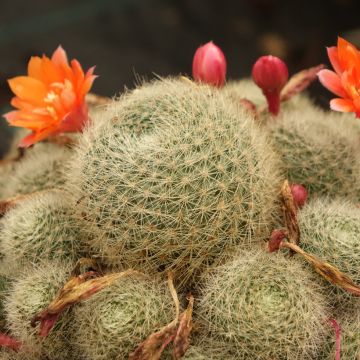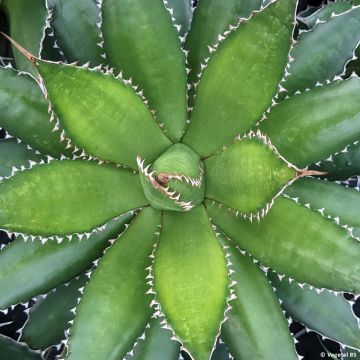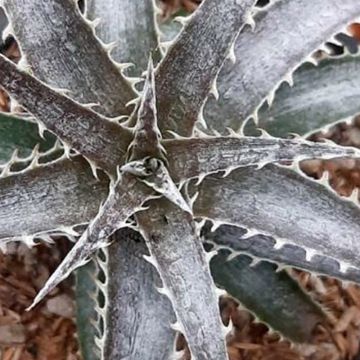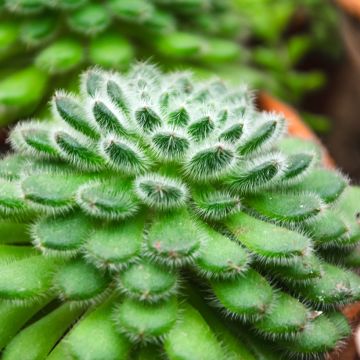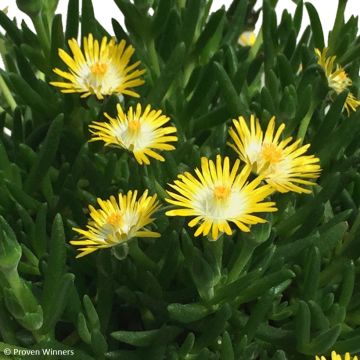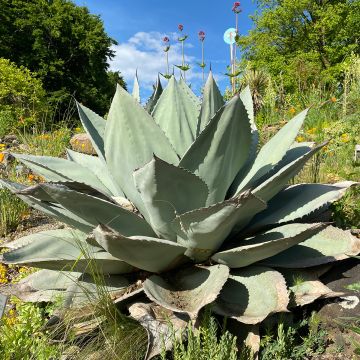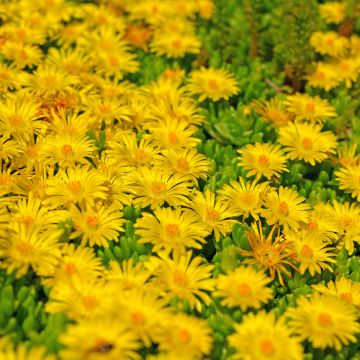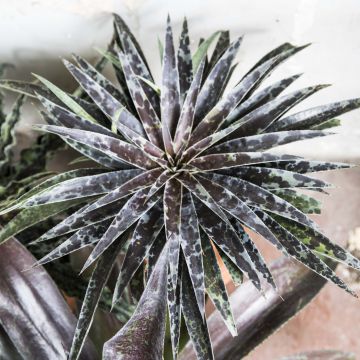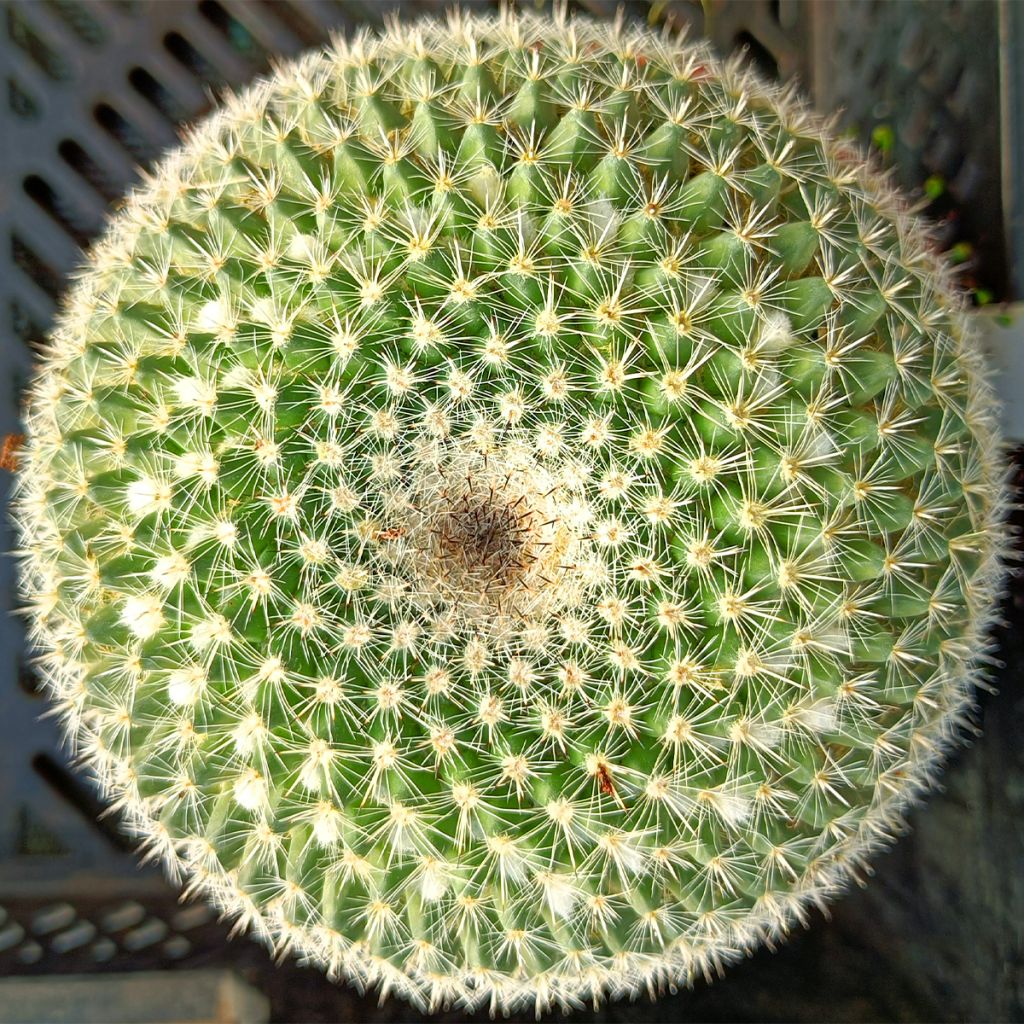

Mammillaria perbella
Mammillaria perbella
Mammillaria perbella
Chilito
This item cannot be shipped to the selected country
Delivery charge from €5.90
More information
Schedule delivery date,
and select date in basket
This plant carries a 12 months recovery warranty
More information
We guarantee the quality of our plants for a full growing cycle, and will replace at our expense any plant that fails to recover under normal climatic and planting conditions.
From €5.90 for pickup delivery and €6.90 for home delivery
Express home delivery from €8.90.
Does this plant fit my garden?
Set up your Plantfit profile →
Description
Mammillaria perbella is a small cushion cactus native to Mexico. It has a beautiful globular shape with a flattened top, adorned with very dense and short white needles. This spination forms circles that curve inward, punctuated by two prominent spines, which are brown with a darker tip. They are long and thick. In late spring, this cactus bears a vibrant crown with an abundance of small pink-purple flowers, followed by bright red fruits, which are equally decorative. It is a solitary cactus that can sometimes branch out at its apex, forming colonies of multiple "heads" over time, like other species of the same genus. This plant is very popular due to its easy cultivation and ability to bloom. It simply requires a sunny exposure in well-draining, light, and porous soil. It will need very little watering.
Mammillaria perbella is a succulent perennial that belongs to the vast Cactaceae family. Mammillaria perbella is a widely spread "cushion cactus" from central Mexico to the Pacific coast, where it grows in semi-desert regions between 1500 and 2800m (4921 and 9186ft). It can be found in humiferous hollows between rocks on limestone banks. It withstands drought and heat well but does not survive temperatures below -2°C (28.4°F), especially if the soil is not perfectly well-drained and dry. Cultivate it in pots outside warm and dry climates, in full sun or partial shade in a very well-draining substrate made of a mix of soil, sand, and gravel. Avoid overly humid environments or excessive watering!
Mammillaria perbella is a very popular cactus thanks to its easy cultivation. It is a perennial with a globular habit that becomes columnar with age. Slow-growing, it can reach 16cm (6in) in height and 8cm (3in) in width in its native environment. When cultivated, it forms a dwarf cushion only 10cm (4in) in height with a similar width. Like all mammillarias, its surface consists of tubercles arranged in symmetrical spirals. In this species, they are conical, 6 to 7mm long and 1mm wide, with a matte green epidermis and two areoles, one at its tip and the other in its axil. The areoles are covered with white down in their youth, which means that the hollow at the top of this cactus is always hidden behind this weaving. The upper areoles bear a first row of 14 to 25 white spines, 2 to 4mm long, grouped in a spiral, and a second row consisting of two central spines, 4 to 6mm long, which are tougher, brownish, and end in a darker point. This plant blooms in May-June, producing an impressive and brightly coloured crown around the top of its swollen body, with small flowers measuring 1cm (0.4in), which are pink-purple with a darker median. They are followed by small bright red club-shaped fruits, 1.5cm (1in) long, which prolong the plant's ornamental interest.
In warm and dry regions, Mammillaria perbella will find its place in a dry and sunny rockery or on a wild bank. Elsewhere, it can be planted in a pot that should be stored away when the first cold arrives. Watering should be stopped until growth resumes in spring. It can be paired with other cacti such as echinocactus, ferocactus, astrophytum, or other species of mammillarias to create miniature desert gardens, or it can be placed alone in a pot to decorate a windowsill.
Report an error about the product description
Mammillaria perbella in pictures
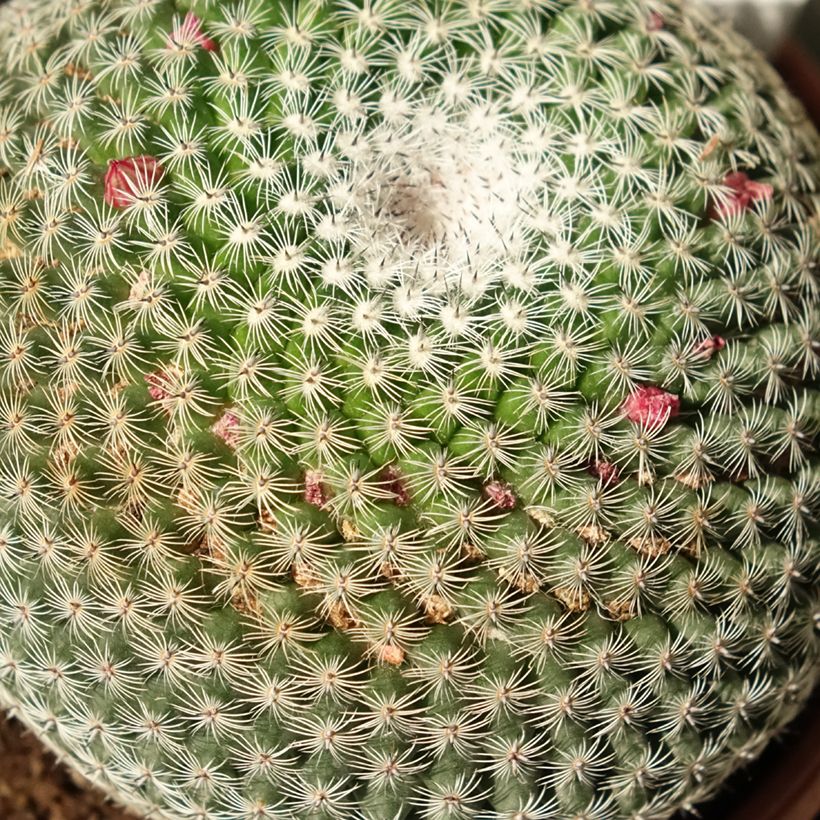

Flowering
Foliage
Plant habit
Botanical data
Mammillaria
perbella
Cactaceae
Chilito
North America
Other Cacti and succulents
Planting and care
Plant the young plant Mammillaria perbella in full sun in light, well-draining, mineral-rich, sandy to rocky soil. It cannot tolerate temperatures below -2°C (28.4°F). Highly resistant to heat and drought, it can be grown outdoors in hot regions, which are dry in summer. Elsewhere, cultivate it in a pot with a cactus substrate, which should be kept dry throughout winter in a bright room between 5 and 10°C (41 and 50°F). Outdoors, protect it from excessive rain, which can cause it to rot. Excessive humidity in winter can also greatly reduce the hardiness of this plant. Water sparingly from March to October.
Planting period
Intended location
Care
This item has not been reviewed yet - be the first to leave a review about it.
Haven't found what you were looking for?
Hardiness is the lowest winter temperature a plant can endure without suffering serious damage or even dying. However, hardiness is affected by location (a sheltered area, such as a patio), protection (winter cover) and soil type (hardiness is improved by well-drained soil).

Photo Sharing Terms & Conditions
In order to encourage gardeners to interact and share their experiences, Promesse de fleurs offers various media enabling content to be uploaded onto its Site - in particular via the ‘Photo sharing’ module.
The User agrees to refrain from:
- Posting any content that is illegal, prejudicial, insulting, racist, inciteful to hatred, revisionist, contrary to public decency, that infringes on privacy or on the privacy rights of third parties, in particular the publicity rights of persons and goods, intellectual property rights, or the right to privacy.
- Submitting content on behalf of a third party;
- Impersonate the identity of a third party and/or publish any personal information about a third party;
In general, the User undertakes to refrain from any unethical behaviour.
All Content (in particular text, comments, files, images, photos, videos, creative works, etc.), which may be subject to property or intellectual property rights, image or other private rights, shall remain the property of the User, subject to the limited rights granted by the terms of the licence granted by Promesse de fleurs as stated below. Users are at liberty to publish or not to publish such Content on the Site, notably via the ‘Photo Sharing’ facility, and accept that this Content shall be made public and freely accessible, notably on the Internet.
Users further acknowledge, undertake to have ,and guarantee that they hold all necessary rights and permissions to publish such material on the Site, in particular with regard to the legislation in force pertaining to any privacy, property, intellectual property, image, or contractual rights, or rights of any other nature. By publishing such Content on the Site, Users acknowledge accepting full liability as publishers of the Content within the meaning of the law, and grant Promesse de fleurs, free of charge, an inclusive, worldwide licence for the said Content for the entire duration of its publication, including all reproduction, representation, up/downloading, displaying, performing, transmission, and storage rights.
Users also grant permission for their name to be linked to the Content and accept that this link may not always be made available.
By engaging in posting material, Users consent to their Content becoming automatically accessible on the Internet, in particular on other sites and/or blogs and/or web pages of the Promesse de fleurs site, including in particular social pages and the Promesse de fleurs catalogue.
Users may secure the removal of entrusted content free of charge by issuing a simple request via our contact form.
The flowering period indicated on our website applies to countries and regions located in USDA zone 8 (France, the United Kingdom, Ireland, the Netherlands, etc.)
It will vary according to where you live:
- In zones 9 to 10 (Italy, Spain, Greece, etc.), flowering will occur about 2 to 4 weeks earlier.
- In zones 6 to 7 (Germany, Poland, Slovenia, and lower mountainous regions), flowering will be delayed by 2 to 3 weeks.
- In zone 5 (Central Europe, Scandinavia), blooming will be delayed by 3 to 5 weeks.
In temperate climates, pruning of spring-flowering shrubs (forsythia, spireas, etc.) should be done just after flowering.
Pruning of summer-flowering shrubs (Indian Lilac, Perovskia, etc.) can be done in winter or spring.
In cold regions as well as with frost-sensitive plants, avoid pruning too early when severe frosts may still occur.
The planting period indicated on our website applies to countries and regions located in USDA zone 8 (France, United Kingdom, Ireland, Netherlands).
It will vary according to where you live:
- In Mediterranean zones (Marseille, Madrid, Milan, etc.), autumn and winter are the best planting periods.
- In continental zones (Strasbourg, Munich, Vienna, etc.), delay planting by 2 to 3 weeks in spring and bring it forward by 2 to 4 weeks in autumn.
- In mountainous regions (the Alps, Pyrenees, Carpathians, etc.), it is best to plant in late spring (May-June) or late summer (August-September).
The harvesting period indicated on our website applies to countries and regions in USDA zone 8 (France, England, Ireland, the Netherlands).
In colder areas (Scandinavia, Poland, Austria...) fruit and vegetable harvests are likely to be delayed by 3-4 weeks.
In warmer areas (Italy, Spain, Greece, etc.), harvesting will probably take place earlier, depending on weather conditions.
The sowing periods indicated on our website apply to countries and regions within USDA Zone 8 (France, UK, Ireland, Netherlands).
In colder areas (Scandinavia, Poland, Austria...), delay any outdoor sowing by 3-4 weeks, or sow under glass.
In warmer climes (Italy, Spain, Greece, etc.), bring outdoor sowing forward by a few weeks.

































